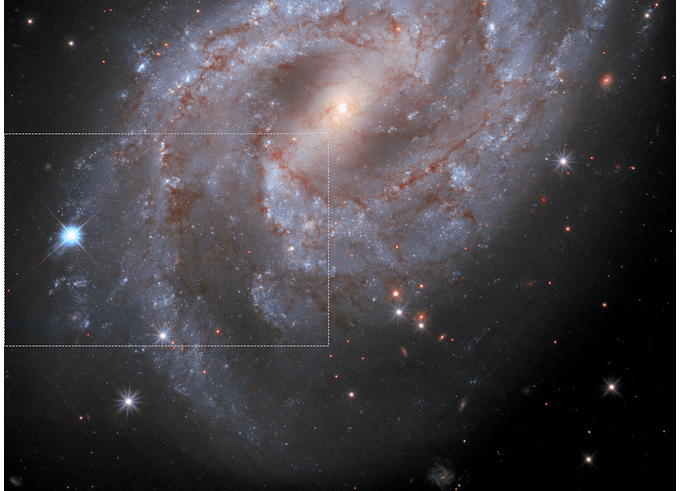Celestial fireworks: Supernovae are arguably one of the most spectacular phenomena in the observable universe. They are not rare, with one happening about once every second. However, it is rare to catch a time-lapse of one in action. Over the last year, the Hubble Space Telescope managed to do just that.
For the last year, the Hubble Space Telescope (HST) has been trained on what NASA defines as a "Type Ia" supernova 70 million lightyears away. In that time, the HST captured photos as the star's explosion peaked and then faded away. Astronomers strung the images into a fantastic 30-second time-lapse clip showing the death of a star (above).

Supernova on the outer edge of galaxy NGC 2525. Image credit: NASA
NASA said that at the peak of the explosion, the star was five billion times brighter than our sun and more luminous than any of the stars in its own galaxy. Below is an animation showing the phases and the expansion of a supernova. NASA notes that matter can be ejected at speeds up to six percent the speed of light.
The star was a white dwarf in a binary system sucking in material from its partner star. The white dwarf eventual reached critical mass, heating its core to the point of igniting a thermonuclear chain reaction.
Since scientists have already determined that Type Ia supernovae peak at the same luminosity, so they can use it to gauge the distance between galaxies accurately. They can then plug the distances in to calculate the rate that the universe is expanding.
Found is a TechSpot feature where we share clever, funny or otherwise interesting stuff from around the web.
https://www.techspot.com/news/86965-time-lapse-shows-supernova-exploding-brighter-than-five.html